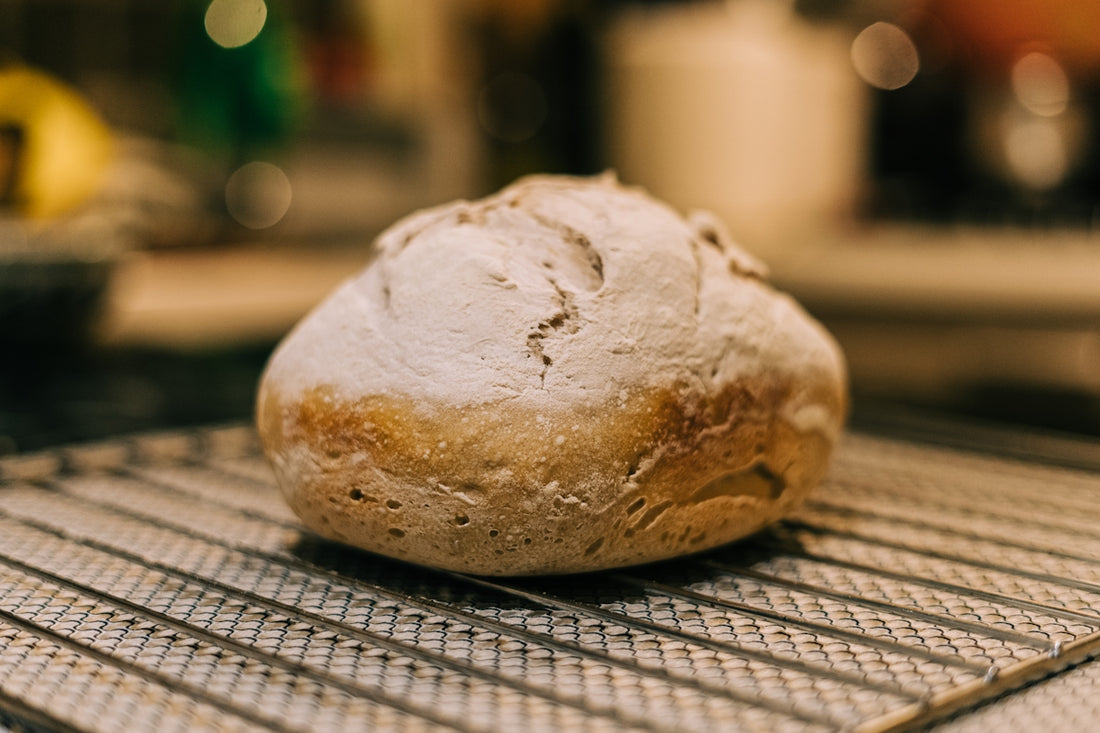
Easy Homemade Sourdough Bread: Mastering a Beginner's Recipe
Introduction to Sourdough Baking
Welcome to the world of sourdough baking, a culinary journey that brings together tradition, science, and a little bit of magic. If you're new to the craft, you're in the right place. This guide will help you master easy homemade sourdough bread, starting from creating a sourdough starter, understanding sourdough fermentation, and learning the nuances that make sourdough bread so special.
Baking sourdough at home is an art form that allows you to dive deep into the transformative power of wild yeast fermentation. At its heart, sourdough bread is simply flour, water, salt, and your lovingly cultivated sourdough starter. So, let's get started on your sourdough journey.
What is a Sourdough Starter?
A sourdough starter is a live fermentation of flour and water that contains wild yeasts and lactic acid bacteria. It's the key to leavening your bread and giving it that distinctive tangy flavor. Unlike commercial yeast, which acts quickly, a sourdough starter gives a slow rise to your dough, enhancing its flavor and digestibility.
To create your own sourdough starter, simply mix equal parts flour (preferably unbleached all-purpose or rye) and water in a jar. Cover loosely with a cloth and let it sit at room temperature. Each day, you'll remove half and feed it with fresh flour and water. This process is often referred to as sourdough starter feeding.
How to Feed Sourdough Starter
Feeding your sourdough starter is crucial to maintaining its vitality. Typically, you'll want a 1:1:1 ratio of starter, flour, and water. If you're not baking frequently, place your starter in the refrigerator and feed it weekly to keep it alive.
For a handy feeding schedule, check your starter daily—bubbles and aroma will indicate it's active. If you're in need of a companion for your sourdough starter maintenance, consider trying the Cake Tools Danish Dough Whisk for an effortless mixing experience.
How to Store Sourdough Starter
Storing your sourdough starter properly is important. When kept at room temperature, it should be fed daily, while refrigeration allows for weekly feeding. For long breaks, consider drying a portion of your starter as a backup.
Sourdough Starter vs Yeast
One of the most intriguing aspects of sourdough bread is its use of natural leavening. Unlike commercially packaged yeast, a sourdough starter provides a robust and nuanced flavor profile. It's a more natural, less processed way of baking bread, which many find preferable.
Starting My Sourdough Life
As you embark on your sourdough life, you'll learn to appreciate the process and patience it requires. From the moment you mix your first batch of dough to the final bake, you're creating something truly artisan. Let's dive into an easy sourdough bread recipe that is perfect for beginners.
Easy Sourdough Bread Recipe
Ingredients
- 500g of strong bread flour
- 350g of water
- 100g of active sourdough starter
- 10g of salt
Method
- Mix the Dough: In a large bowl, combine the flour and water, mixing until no dry flour remains. Let it rest for 30 minutes to an hour.
- Add the Sourdough Starter and Salt: Incorporate the starter and salt, performing a series of stretches and folds until well combined. This helps strengthen gluten development.
- Bulk Fermentation: Allow the dough to rise at room temperature until it has nearly doubled in size. Timing will depend on the temperature and strength of your starter, typically around 4-5 hours.
- Shape the Dough: Turn the dough out on a lightly floured surface. Gently shape it into a ball, being careful not to knock out all of the gas.
- Second Rise: Place the shaped dough into a floured banneton or a loaf tin, cover, and let it proof for another 2-3 hours. Alternatively, this can be done overnight in the fridge for a deeper flavor.
- Prepare for Baking: Preheat your oven to 230°C (450°F). For best results, use a Dutch oven to create steam, promoting a beautiful crust. Consider the Nonna Bella 4.5Qt Enameled Cast Iron Dutch Oven with Bread Baking Set for beautifully baked sourdough.
- Bake the Bread: Score the top of your loaf with a sharp blade to allow for expansion, then place it in the preheated Dutch oven. Bake for 20 minutes with the lid on, then another 25 minutes with the lid off for a golden brown crust.
- Cool and Enjoy: Allow the bread to cool completely on a wire rack before slicing.
Sourdough Baking Tips
- Temperature Control: Dough temperature impacts fermentation. Aim for a dough temperature of 24–26°C (75–78°F).
- Scoring Techniques: Use a sharp blade to score your bread. The best sourdough scoring techniques allow for artistic expression and perfect expansion.
- Troubleshooting: If your bread doesn't rise much, check if your starter is active enough. For more sourdough bread troubleshooting tips, visit Italian Sourdough.
Additional Tools for Sourdough Bakers
Consider investing in a Nonna Bella 2 in 1 Seasoned Cast Iron Double Dutch Oven Combo Cooker for versatile sourdough baking and cooking.
Sourdough for Diabetics
Sourdough bread is often considered a better option for people with diabetes because the slow fermentation process reduces its glycemic index. This makes it a healthier choice for managing blood sugar levels compared to commercially yeasted bread.
Conclusion
Baking sourdough bread is a rewarding experience that connects you to an age-old tradition. With patience and a bit of practice, you'll be able to produce delicious, artisan-quality bread in your very own kitchen. For more tips, recipes, and products, visit Italian Sourdough. Happy baking!
